Varvara Kollia
On Recommending Category: A Cascading Approach
Dec 17, 2025Abstract:Recommendation plays a key role in e-commerce, enhancing user experience and boosting commercial success. Existing works mainly focus on recommending a set of items, but online e-commerce platforms have recently begun to pay attention to exploring users' potential interests at the category level. Category-level recommendation allows e-commerce platforms to promote users' engagements by expanding their interests to different types of items. In addition, it complements item-level recommendations when the latter becomes extremely challenging for users with little-known information and past interactions. Furthermore, it facilitates item-level recommendations in existing works. The predicted category, which is called intention in those works, aids the exploration of item-level preference. However, such category-level preference prediction has mostly been accomplished through applying item-level models. Some key differences between item-level recommendations and category-level recommendations are ignored in such a simplistic adaptation. In this paper, we propose a cascading category recommender (CCRec) model with a variational autoencoder (VAE) to encode item-level information to perform category-level recommendations. Experiments show the advantages of this model over methods designed for item-level recommendations.
Metal-Oxide Sensor Array for Selective Gas Detection in Mixtures
Feb 25, 2021
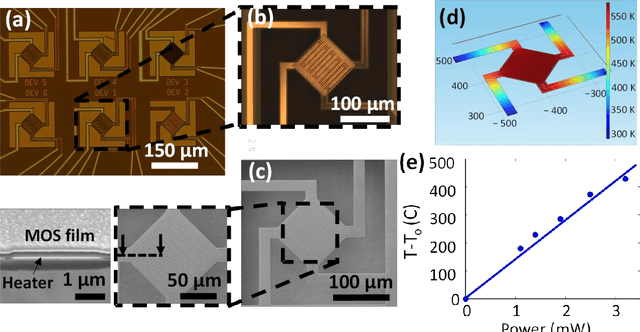
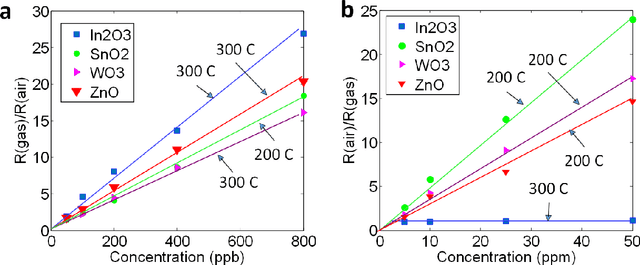
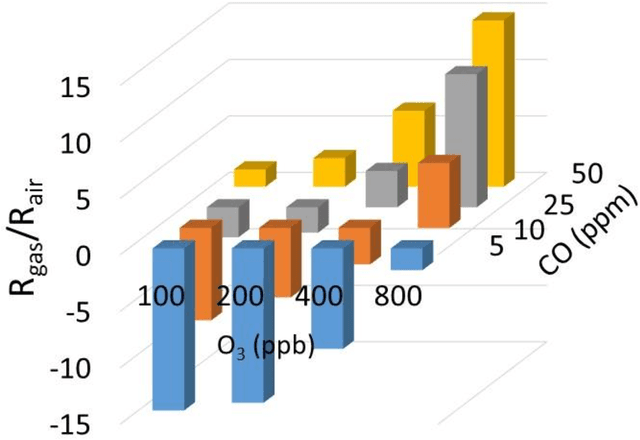
Abstract:We present a monolithic, microfabricated, metal-oxide semiconductor (MOS) sensor array in conjunction with a machine learning algorithm to determine unique fingerprints of individual gases within homogenous mixtures. The array comprises four different metal oxides, and is engineered for independent temperature control and readout from each individual pixel in a multiplexed fashion. The sensor pixels are designed on a very thin membrane to minimize heat dissipation, thereby significantly lowering the overall power consumption ($<$30 $\mu$W average power). The high dimensional data obtained by running the pixels at different temperatures, is used to train our machine learning algorithm with an average accuracy $\sim$ 88$\%$ for high resolution detection and estimation of concentration of individual constituents in a homogenous mixture. While the response of MOS sensors to various gases has been demonstrated, very few studies have investigated the response of these sensors to homogeneous mixtures of gases comprising several gases. We demonstrate this principle for a binary homogeneous mixture of ozone and carbon monoxide, both of which are criteria pollutant gases. Our findings indicate that a multiplicity of MOS elements together with the ability to vary and measure at various temperatures are essential in predicting concentration of individual gases within mixtures, thereby overcoming a key limitation of MOS sensors - poor selectivity. The small form-factor and microfabrication approach of our sensor array also lends itself to CMOS integration paving the way for a platform for wearable and portable applications.
A Controlled Set-Up Experiment to Establish Personalized Baselines for Real-Life Emotion Recognition
Mar 19, 2017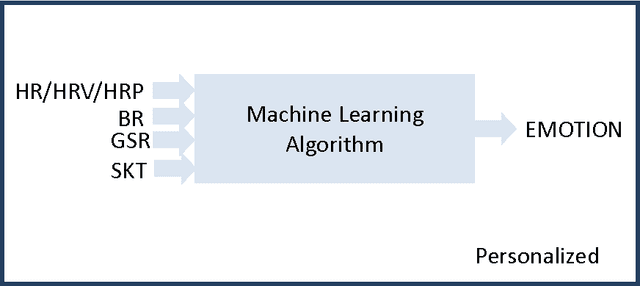
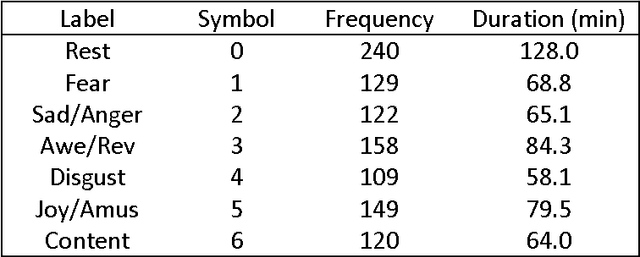
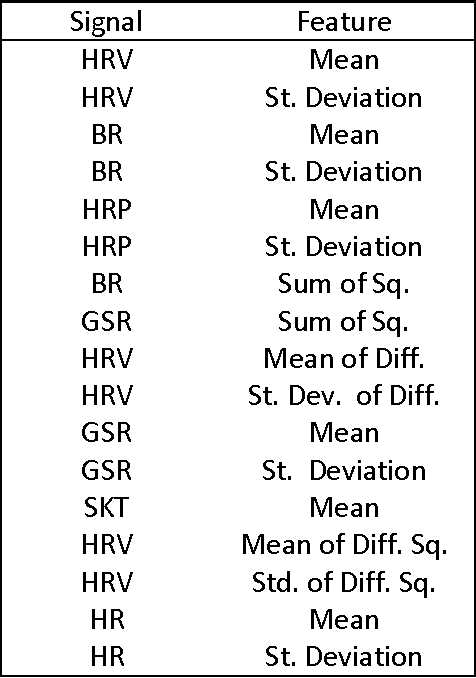
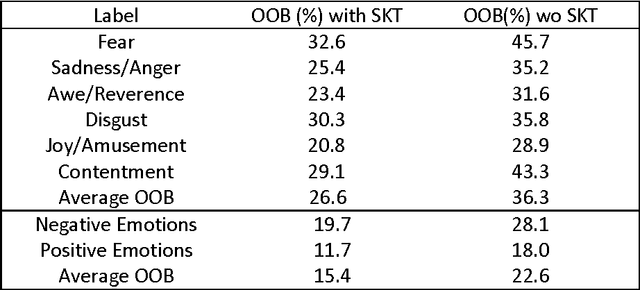
Abstract:We design, conduct and present the results of a highly personalized baseline emotion recognition experiment, which aims to set reliable ground-truth estimates for the subject's emotional state for real-life prediction under similar conditions using a small number of physiological sensors. We also propose an adaptive stimuli-selection mechanism that would use the user's feedback as guide for future stimuli selection in the controlled-setup experiment and generate optimal ground-truth personalized sessions systematically. Initial results are very promising (85% accuracy) and variable importance analysis shows that only a few features, which are easy-to-implement in portable devices, would suffice to predict the subject's emotional state.
Distributed Processing of Biosignal-Database for Emotion Recognition with Mahout
Sep 09, 2016
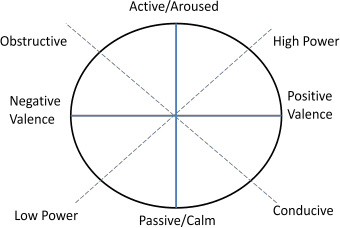
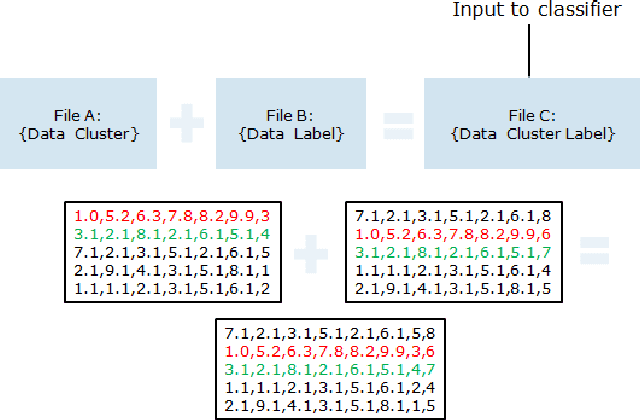
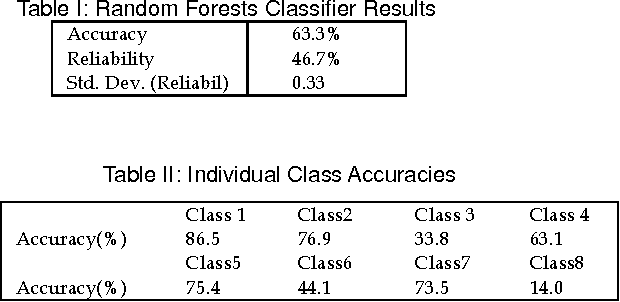
Abstract:This paper investigates the use of distributed processing on the problem of emotion recognition from physiological sensors using a popular machine learning library on distributed mode. Specifically, we run a random forests classifier on the biosignal-data, which have been pre-processed to form exclusive groups in an unsupervised fashion, on a Cloudera cluster using Mahout. The use of distributed processing significantly reduces the time required for the offline training of the classifier, enabling processing of large physiological datasets through many iterations.
Personalization Effect on Emotion Recognition from Physiological Data: An Investigation of Performance on Different Setups and Classifiers
Jul 20, 2016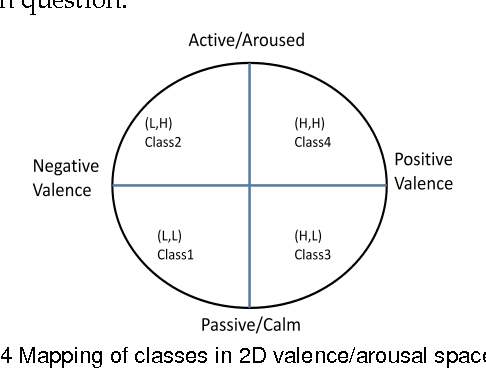
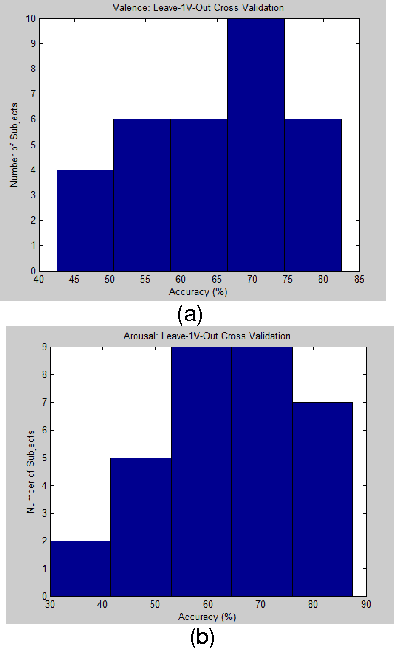
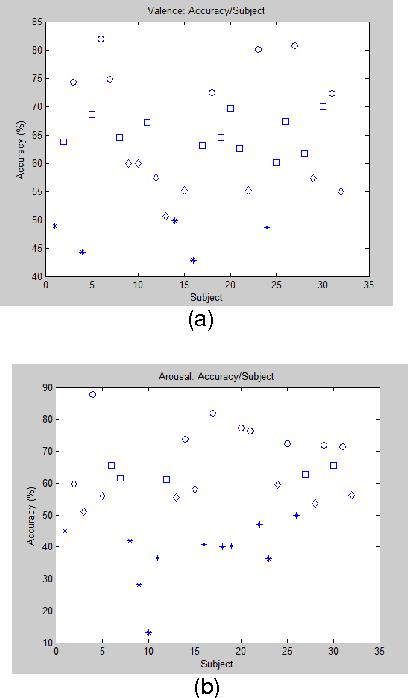
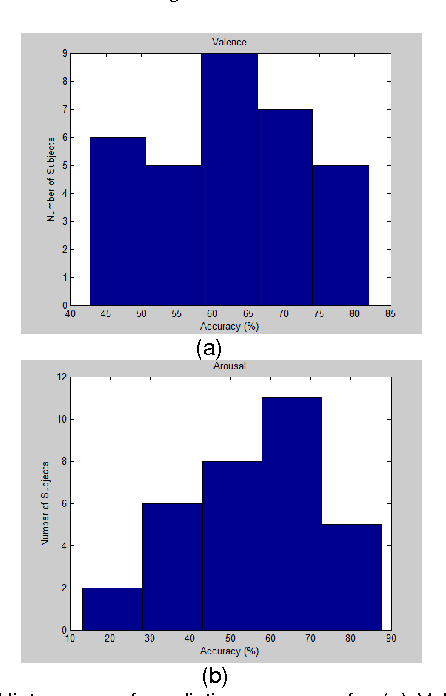
Abstract:This paper addresses the problem of emotion recognition from physiological signals. Features are extracted and ranked based on their effect on classification accuracy. Different classifiers are compared. The inter-subject variability and the personalization effect are thoroughly investigated, through trial-based and subject-based cross-validation. Finally, a personalized model is introduced, that would allow for enhanced emotional state prediction, based on the physiological data of subjects that exhibit a certain degree of similarity, without the requirement of further feedback.
 Add to Chrome
Add to Chrome Add to Firefox
Add to Firefox Add to Edge
Add to Edge